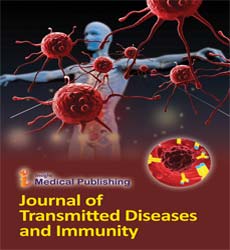Abstract
Trends in HIV Prevalence among Pregnant Women in Lusaka Province, Zambia 1994-2008
Background: Human immunodeficiency virus infection can contribute to reduced maternal and child population based health outcomes. In certain regions of subSaharan Africa, new HIV infections have been reported to continue to rise in spite of PMTCT programs. We examined the trends of HIV prevalence among pregnant women aged 15-49 years attending antenatal care in Lusaka Zambia for the period 1994-2008. Methods: We conducted a retrospective cross sectional study on data nested on the six repeated national ANC sentinel surveillance cycles on HIV and syphilis at the four Lusaka sites namely, Chelstone, Chilenje, Kalingalinga and Matero. Pregnant women aged 15-49 years attending their first ANC clinic visit received syphilis testing as well as anonymous HIV testing. In this study we focused on the period 1994-2008 for Lusaka Province. All data analysis was conducted using Stata version 12.1. Logistic regression analysis was applied to assess the association between HIV infection and other predictor variables. Results: Overall 16,694 pregnant women were included in the study. HIV prevalence declined from 27.3% in 1994 to 24.1% in 2008 (P<0.001), contrasting differences by site and age group were observed. HIV prevalence was significantly lower in age group 15-24 years than the older age-groups (20.9% versus 32.1%, P-value <0.001). Site patterns showed that in Chelstone, HIV prevalence declined from 24.7% in 1994 to 20.9% in 2008 (P = 0.03), 35.3% to 24.2% (P<0.001) in Chilenje and from 28.4% to 24.4% (P=0.02) in Matero. In contrast, Kalingalinga recorded an increase from 21.7% to 26.7% (P<0.001) for the same period. HIV infection among pregnant women was associated with syphilis infection (aOR 2.12; 95%CI 1.67- 2.69). Conclusion: Overall HIV infection among pregnant women in Lusaka has declined over the years. The unchanging burden observed in selected age groups and site may suggest limitations of the PMTCT program in reaching these groups. The results of our study highlight the need to strengthen HIV prevention and control efforts to specific target groups.
Author(s): Kasonde GM, Makasa M and Michelo C
Abstract | Full-Text | PDF
Share This Article
Google Scholar citation report
Citations : 54
Journal of Transmitted Diseases and Immunity received 54 citations as per Google Scholar report
Abstracted/Indexed in
- Google Scholar
- China National Knowledge Infrastructure (CNKI)
- International Committee of Medical Journal Editors (ICMJE)
- Secret Search Engine Labs
Open Access Journals
- Aquaculture & Veterinary Science
- Chemistry & Chemical Sciences
- Clinical Sciences
- Engineering
- General Science
- Genetics & Molecular Biology
- Health Care & Nursing
- Immunology & Microbiology
- Materials Science
- Mathematics & Physics
- Medical Sciences
- Neurology & Psychiatry
- Oncology & Cancer Science
- Pharmaceutical Sciences

